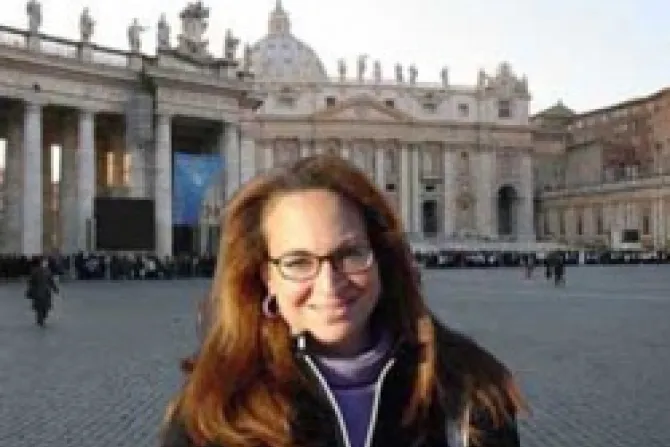Rome, Italy, Mar 6, 2013 / 04:04 am
Pope Emeritus Benedict's emphasis on beauty as a means to encounter truth and grow in faith is one of the "greatest seeds" planted during his pontificate, says art historian Elizabeth Lev.
"In his way of beauty, he says the true way of humanity is this beauty we have in the image and likeness of God," Lev, a faculty member at the University of St. Thomas' Rome Program, told CNA in February.
"Over the course of his pontificate, and even as cardinal, he has implemented these seeds, these stepping stones for us to follow, to understand the nature of beauty."
Lev, who studied renaissance art at the University of Chicago and who did her graduate work in baroque art at the University of Bologna, writes for Inside the Vatican, First Things, and Zenit.
She said that Benedict has taught that though beauty can at first be "frightening" or overwhelming, it ultimately "leads us out of ourselves to something great."
Lev reflected that over the course of his life, Benedict has "seen real ugliness," yet "recognizes this is not the full truth of humanity. During his childhood he experienced the ugliness of the Nazi regime and the second world war in his homeland, and as prefect of the Congregation for the Doctrine of the Faith, he had to deal with clergy abuse files.
In addition to teaching, Lev is a tour guide in Rome. She has seen that in encountering "real authentic beauty," people are opened to the truth. Observing this, she said that "Pope Benedict's words have become clearer to me."
In his 2005 work "On the Way to Jesus Christ," Benedict wrote that "beauty wounds, but that is precisely how it awakens man to his ultimate destiny" and that "beauty is knowledge...because it strikes man with the truth in all its greatness."
Lev said that she has seen people struck by the beauty of St. Peter's Basilica or St. Mary Major, and that this encounter with beauty helps them see the changes they need to make in how they live their life.
This is what Benedict meant, when in the same work, he wrote that "pastoral ministry...must arrange for people to encounter the beauty of the faith."
Lev has seen those who come to Rome and while not Catholic or even Christian, "are receptive to beauty and are in that world willing and happy to listen to the truth behind it, and see it as a goodness."
"Then there are those who are not interested in beauty and convinced they couldn't care less, but they find themselves slowly seduced by beauty. That's a real joy."
Lev also discussed Benedict's Nov. 21, 2009 address to artists at the Sistine Chapel. At that time he expressed a desire to "renew the Church's friendship with the world of art." Lev believes this friendship will "continue to flower" through coming pontificates.
She said Benedict's teaching about "authentic truth and beauty" was an effort to "develop a discernment" about what is beautiful and what is not.
In his address to artists, Benedict distinguished between an "illusory and deceitful" counterfeit of beauty which deprives the onlooker of "hope and joy," and authentic beauty, which brings him "out of himself" and draws the viewer to "to towards the Other, to reach for the Beyond."
"Beauty, whether that of the natural universe or that expressed in art, precisely because it opens up and broadens the horizons of human awareness, pointing us beyond ourselves, bringing us face to face with the abyss of Infinity, can become a path towards the transcendent, towards the ultimate Mystery, towards God," Benedict said.
Reflecting on Benedict's words, Lev concluded that "we will see a growth...of friendship between art and the Church."



